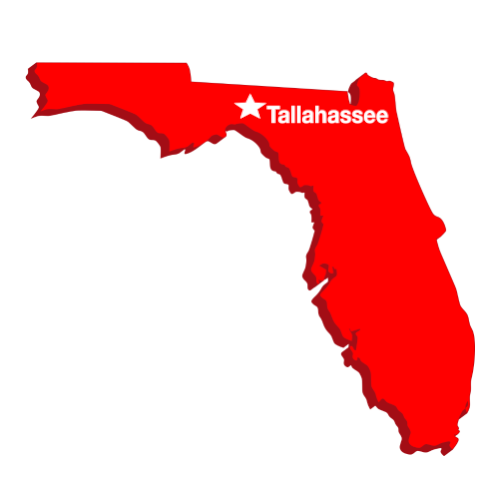

Chevrolet Bolt EV Patrol Car Hits the Streets in Md.
Can electric vehicles (EVs) work as patrol vehicles? This has been a question posed many times before, but there has not been a clear answer yet.

Hyattsville Police unveiled its newest patrol car at local car shows during National Drive Electric Week in the Washington, D.C., area before being deployed in mid-September. Photo courtesy of Hyattsville Police Department
So far, we’ve learned that electrification in police fleets is a reality. Battery-electric vehicles are being used by the Los Angeles Police Department (LAPD), which purchased 100 BMW i3 EVs last year for non-patrol work, and the City of West Palm Beach, which deployed Chevrolet Bolts last week for volunteers assisting the Police Department.
The New York Police Department (NYPD) has used hybrid-electric vehicles for patrol and administrative use since 2010. And, with the introduction of Ford’s Police Responder Hybrid Sedan, and a second hybrid police vehicle scheduled for 2020, electrified patrol cars are here. But where are the patrol EVs?
Sgt. Richard Hartnett, technical services & electric vehicles project manager for the Hyattsville Police Department in Maryland, believes his agency has the country's first Chevrolet Bolt EV used as a fully marked police cruiser. As a self-proclaimed EV enthusiast, Hartnett helped push the initiative forward. He is also the first user of the vehicle.
“The city has three Ford C-Max Hybrids for code enforcement, and three Polaris GEM All-Electric low speed vehicles (LSVs) for parking enforcement, so it only made sense that we experiment with an all-electric car for police patrol work,” Hartnett said. “Unfortunately the initial cost for EVs is much more than gas-powered vehicles (even though they generally make more financial sense in the long run), so we sought the help of a grant to help ease that sticker shock,” he said.
The agency found a reimbursement grant offered by the Maryland Energy Administration that requires agencies to “trade in” one gasoline vehicle to receive funding for an equivalent battery-electric vehicle. The Police Department traded in two vehicles and received enough money to cover 80% of the price of a Chevrolet Bolt and two Level 2 charging stations. Through is Electric Vehicles Project, the city also purchased a Zero battery-electric motorcycle and plans to install six more charging stations at public parking lots around the city.
Although the vehicle has not been involved in a pursuit yet, Hartnett believes it would hold up well. The car reached 60 mph in 6.5 seconds, and can reach a top speed of 93 mph. Plus, there are always vehicles nearby ready for backup.
“We are located in a very urban area, with what seems like a police car on every corner, so chases are becoming few and far between for us,” Hartnett said. “Even when they do happen, it's hard for the violator to 'outrun the radio,' so most times the actual length of a chase is very short.”
The agency's upfitter had to get creative when making equipment fit in the vehicle. Photo courtesy of Hyattsville Police Department
Since the Bolt was rolled out slowly over time and was not made available across the country until September 2017, there were not many options for equipment. The agency's upfitter, Global Public Safety Equipment in Hanover, Md., had to get creative when making equipment fit, and even custom-built a console for two-way radios.
“Our installation company was great at making suggestions on how to mount the radios, computer, siren/lighting controller, etc., and went the extra mile in making the installation look custom,” Harnett said. “Most of the equipment in the Bolt is either the same or very similar to our regular police vehicles, with some exceptions.”
The agency had to purchase a smaller light bar so it would fit on the roof, for example. Limited product options and the Bolt’s design meant a driver-side mounted spotlight had to be left off. Remote-head two-way radios and siren-lighting control units were installed, with the actual equipment bodies stored in the trunk due to limited space under the dashboard. The powertrain was also considered when deciding how to power equipment.
“Adding emergency lighting equipment and radios/siren had to be figured into the equation, to make sure that they did not draw so much power from the 12-volt battery as to drain it, since there is no alternator in an EV like there is in a gasoline vehicle,” Hartnett said. “So far we have tested the Bolt by having all of the emergency lighting and radio equipment operating for seven hours continuously, with no adverse drain on the 12-volt battery.”
The upfitter installed a charge guard device, programmed to kill power to lights, radios, the computer, and other aftermarket equipment one hour after the vehicle is turned off.
Upfitters custom-built a center console to hold a two-way radio. Photo courtesy of Hyattsville Police Department

The agency's upfitter had to get creative when making equipment fit in the vehicle. Photo courtesy of Hyattsville Police Department
Although Hartnett has had a good experience with the Bolt patrol car, he understands the uphill battle in deploying more. As an EV owner himself, Hartnett is more versed than most in how to operate and maintain an electric vehicle, but notes the benefits seem to outweigh problems.
“It is completely silent and runs smoothly with no motor vibration or noise. The regenerative braking feature allows a true one-foot driving experience, while returning some charge to the battery while the vehicle is slowing down. It also saves on the use of brake pads, since the slowing of the vehicle is done by the force of the motor/generator while creating electricity,” Hartnett said.
Of course, if it were deployed fleet-wide, there are more factors to consider, such as charging and training. But Hartnett hopes his agency’s pilot demonstrates the concept, and encourages others to consider EVs.
“If all goes well, we hope to get another one next year, and possibly more after that. We are also hoping that if our experiment shows promising results, General Motors (or other big manufacturers) will take notice and consider building electric vehicles specifically designed for fleet/police use.”

7449 Race Road
Suite 100
Hanover MD 21076
877.557.0200

130 Old Airport Rd
Roebuck SC 29376
864.587.9821

1803 Mount Rose Ave
Suite A-7
York PA 17403
717.879.9455

276 Rt 101
Bedford, NH 03110
603.617.7178

4240 LB McLeod Road
Orlando FL 32811
321.204.9398

60 Alhambra Road
Suite #6
Warwick RI 02886
401.942.0044

1886 Old Mountain Road
Statesville NC 28677
704.324.8029

26831 Sussex Highway
Seaford DE 19973
302-608-6747

6514 47th Street N
Pinellas Park FL 33780
813.519.0911

316 Marpan Lane
Tallahassee FL 32305
850.391.2266

5605 Florida Mining Blvd
#211-212
Jacksonville FL 32257
904.701.1551